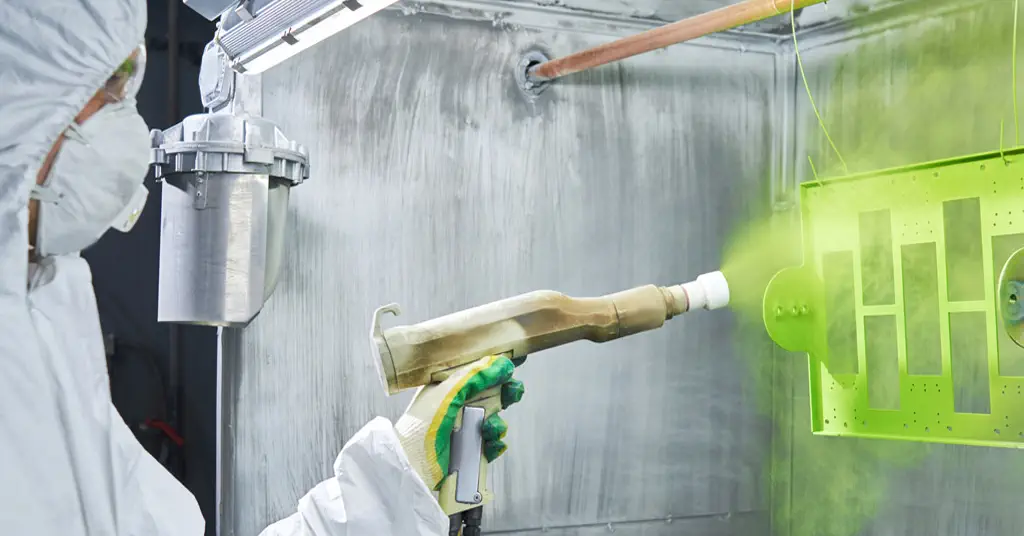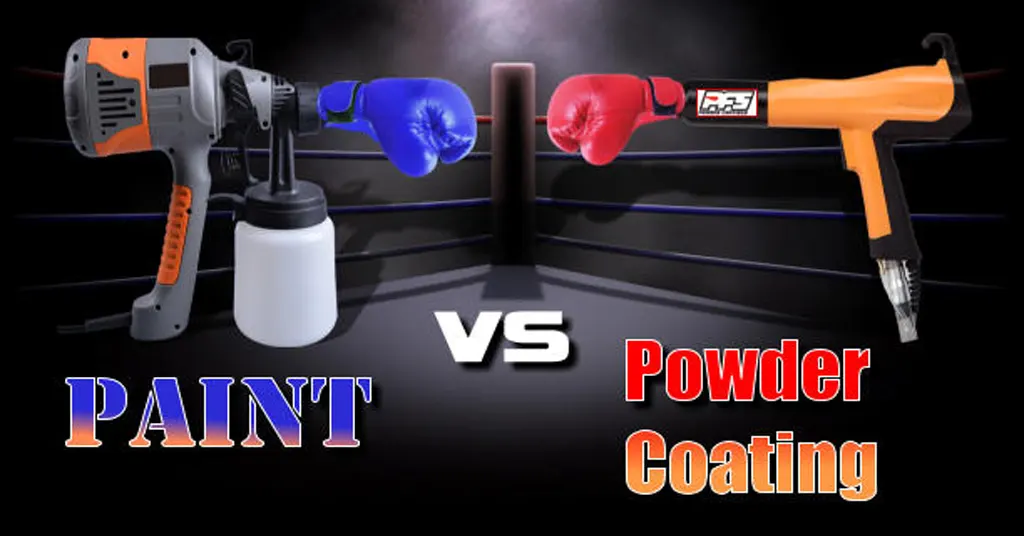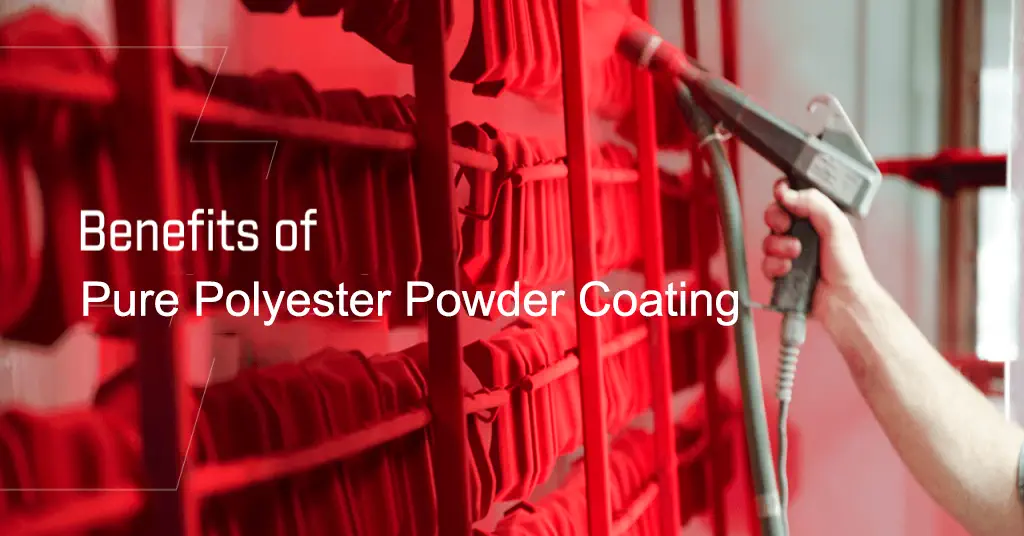Adhesion and Long-Term Protection of Powder Coating on Marine Steel Surfaces
Marine steel surfaces endure harsh conditions. Saltwater, humidity, UV radiation, and mechanical stress can weaken coatings, leading to corrosion and structural damage. For ships, offshore platforms, and marine equipment, strong adhesion and long-term protection are critical for safety and cost savings.
Powder coating is a trusted solution. It provides excellent adhesion to steel surfaces and delivers durable protection in marine environments. This article explores the science behind powder coating adhesion, its long-term benefits, and how it ensures lasting performance.
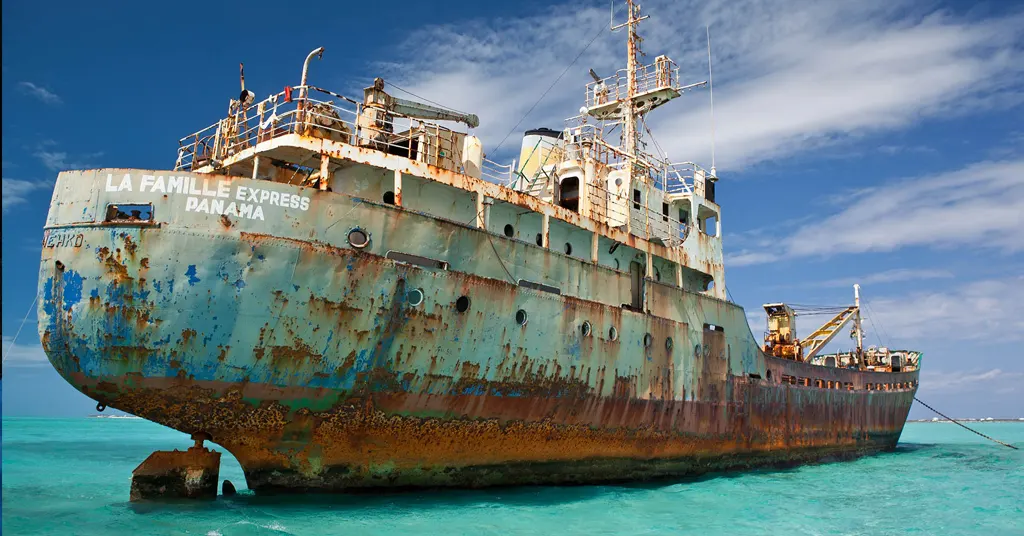
Why Adhesion Matters for Marine Steel Surfaces
Adhesion refers to how well a coating bonds to a surface. In marine environments, poor adhesion can lead to:
- Coating Delamination: The coating may peel or crack, exposing steel to corrosion.
- Reduced Durability: Weak bonds fail under mechanical stress or environmental exposure.
- Increased Maintenance: Premature coating failure requires frequent repairs, increasing costs.
Strong adhesion ensures the coating remains intact, providing a barrier against saltwater, humidity, and chemicals. It’s the foundation of long-term protection for marine steel surfaces.
The Science Behind Powder Coating Adhesion
Powder coating uses electrostatically charged powder particles that are sprayed onto a surface and cured under heat. The process ensures strong adhesion through several mechanisms:
1. Electrostatic Bonding
During application, the powder particles are charged and attracted to the grounded steel surface. This creates a uniform layer that adheres tightly to the steel.
- Even Coverage: Electrostatic forces ensure the powder reaches edges, corners, and complex shapes.
- Initial Bond Strength: The electrostatic bond provides a foundation for curing.
2. Surface Preparation
Proper surface preparation is critical for adhesion. Sandblasting or chemical cleaning creates a rough texture on the steel, enhancing mechanical bonding.
- Sa 2.5 Standard (ISO 8501-1): Removes rust and mill scale, improving adhesion.
- Clean Surface: Removes grease, oil, and dirt that can weaken bonds.
3. Curing Process
The curing process melts the powder particles, forming a continuous, durable layer. This enhances chemical and mechanical bonding to the steel.
- Curing Temperature: Typically 180–200°C for 10–20 minutes.
- Cross-Linking: The resin in the powder forms strong molecular bonds during curing.
4. Coating Composition
Marine-grade powder coatings are formulated for adhesion in harsh conditions.
- Epoxy Coatings: Provide strong adhesion for underwater surfaces.
- Polyester Coatings: Offer adhesion and flexibility for above-water areas.
- Zinc-Rich Primers: Enhance adhesion and provide galvanic protection.
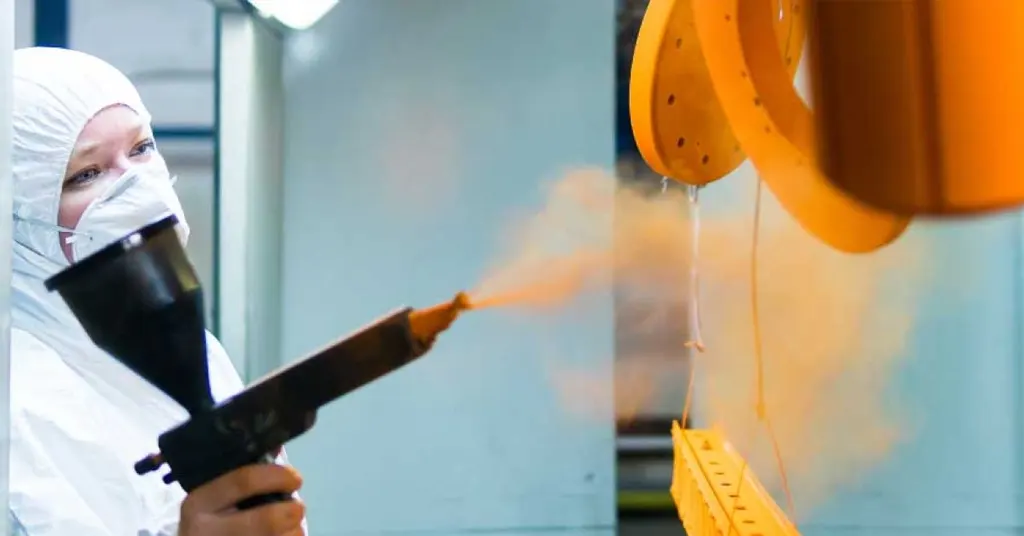
Testing Adhesion for Marine Powder Coatings
Adhesion testing ensures the coating will perform in marine environments. Common methods include:
1. Cross-Hatch Test (ASTM D3359)
- A grid is cut into the coating, and tape is applied and removed.
- The test evaluates how much coating is removed, indicating adhesion strength.
- Result: Coatings with minimal removal (4B or 5B rating) are ideal for marine use.
2. Pull-Off Test (ASTM D4541)
- A dolly is glued to the coating, and force is applied to pull it off.
- Measures the force required to separate the coating from the steel.
- Result: Higher pull-off strength indicates better adhesion.
3. Salt Spray Testing (ASTM B117)
- Exposes the coated steel to salt spray for extended periods (e.g., 1,000 hours).
- Evaluates adhesion under corrosive conditions.
- Result: Coatings with minimal delamination or rust are suitable for marine environments.
Long-Term Protection Benefits of Powder Coating
Strong adhesion leads to long-term protection for marine steel surfaces. Here’s how powder coating ensures lasting performance:
1. Corrosion Resistance
Powder coatings create a robust barrier that prevents saltwater, oxygen, and humidity from reaching the steel.
- Epoxy Coatings: Ideal for underwater surfaces, resisting corrosion for 10–15 years.
- Zinc-Rich Primers: Provide galvanic protection, extending service life.
2. Resistance to Mechanical Stress
Marine steel surfaces face mechanical stress from waves, collisions, and equipment. Powder coatings maintain adhesion under impact and abrasion.
- Polyurethane Coatings: Offer flexibility and impact resistance for high-wear areas.
- Abrasion Resistance: Prevents scratches that could compromise adhesion.
3. UV and Weather Resistance
Above-water surfaces are exposed to sunlight and weather changes. Powder coatings resist UV damage, maintaining adhesion over time.
- Polyester Coatings: Prevent fading and chalking, ensuring long-term protection.
- Thermal Stability: Resist cracking under temperature fluctuations.
4. Reduced Maintenance Needs
Strong adhesion reduces the need for frequent recoating or repairs. This saves time and money for marine operators.
- Durability: Powder coatings can last 10–20 years in marine environments.
- Cost-Effective: Lower maintenance costs offset higher initial application costs.
5. Compliance with Industry Standards
Marine-grade powder coatings meet strict standards for adhesion and durability, such as ISO 12944 and NORSOK M-501.
- ISO 12944-5: Ensures coatings provide long-term corrosion protection in C5-M environments.
- NORSOK M-501: Requires coatings to withstand harsh offshore conditions.
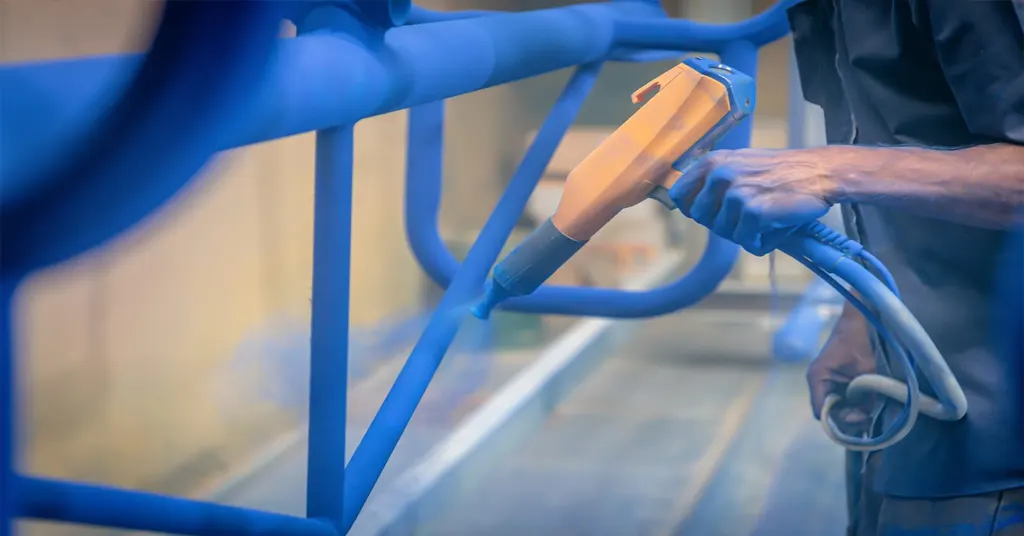
Applications of Powder Coating for Adhesion and Protection
Powder coating is used in various marine applications to ensure strong adhesion and long-term protection:
- Ship Hulls (Below Waterline): Epoxy or zinc-rich coatings provide adhesion and corrosion resistance.
- Ship Decks and Walkways: Polyurethane coatings offer adhesion and impact resistance.
- Railings and Handrails: Polyester coatings maintain adhesion under weather exposure.
- Marine Equipment: Polyurethane coatings protect cranes, winches, and valves from wear.
- Offshore Platforms: Zinc-rich primers and polyester topcoats ensure adhesion in harsh conditions.
- Marine Pipelines and Tanks: Epoxy coatings provide adhesion and chemical resistance.
Conclusion
Powder coating ensures strong adhesion and long-term protection for marine steel surfaces. Its electrostatic bonding, surface preparation, and curing process create durable coatings that resist corrosion, mechanical stress, and weather exposure. By choosing the right coating and following proper application techniques, you can ensure lasting performance for ships, offshore platforms, and marine equipment.

Erik
Doctor of Chemical Engineering, expert in the field of powder coatings, with over 20 years of professional experience in the research and application of powder coatings
Latest news
Have Anything To Ask Us?
